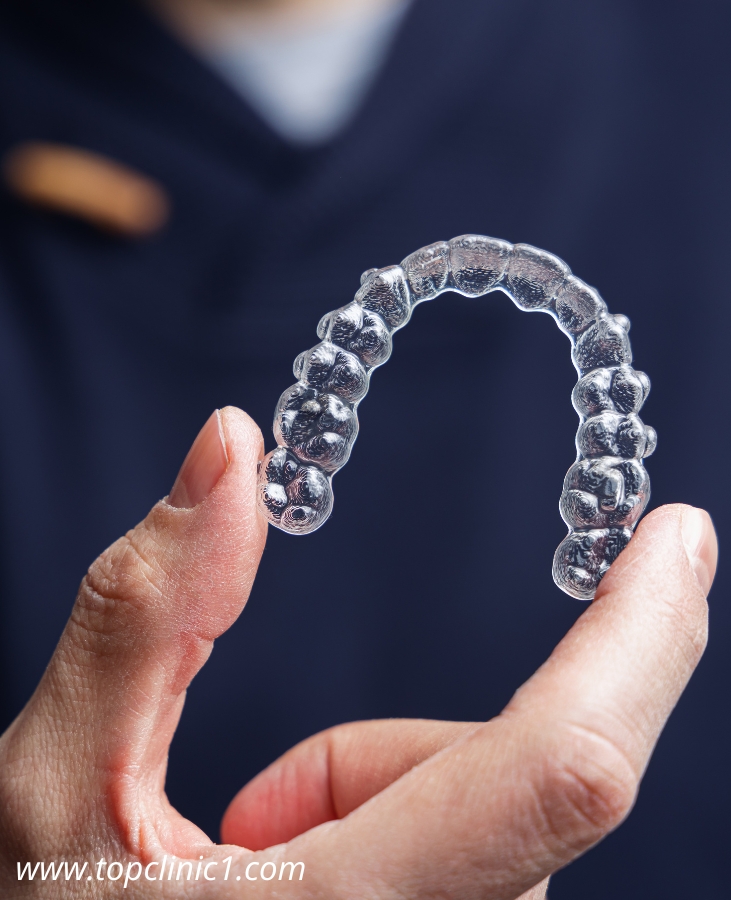عيادات التوب لطب وزراعــة الأسنــان
Orthodontics is one of the most important branches of treatment in cosmetic dentistry
Without it, the balance and equal symmetry of the teeth cannot be restored, in order to obtain a healthy and beautiful smile that gives you self-confidence.
About orthodontics
The purpose of installing orthodontics is to achieve a cosmetic and therapeutic purpose at the same time. It is used to move the teeth and improve their return to their natural place in the mouth in order to obtain an attractive and regular smile. Orthodontic braces are also installed to improve the occlusion of the upper jaw with the lower jaw in an equal and balanced manner, and to get rid of The problem of the protrusion of the jaws and the lack of harmony between them.
Orthodontics is considered one of the special tools used by the dentist due to achieving the cosmetic goals and the benefits that the patient desires.
So in this article, you will learn about the importance of getting braces? What are the most important conditions for dental implants? And its stages? And its procedures? And much more than you will know through this article.
Q1
What are the conditions for installing orthodontics? Here are the most important conditions for installing orthodontics that the patient must meet in order to undergo treatment:
The jawbone and gums should be free of problems and infections.
Ensure that all teeth are healthy and free of any decay.
The presence of sufficient strength in the jaw bones to bear the orthodontic pressure and the force applied by the orthodontic device and translate it into movement to correct the position of the tooth.
The patient must not suffer from advanced chronic diseases such as diabetes and high blood pressure, because this can greatly affect the health of the jaw bones, knowing that the diabetic patient’s non-advanced condition does not interfere with the installation of orthodontics.
Q2
What are the types of orthodontics? Metal braces.
1. Metal braces are the most common type of braces and consist of:
Mineral blockers.
Metal wire.
Rubber.
2. Clear braces.
3. Clear braces are a transparent mold made of medical plastic that is easy to install and has a transparent appearance.
4. Ceramic braces.
It is a dental braces made of porcelain and is characterized by its color similar to the color of teeth.
5. Lingual orthodontics.
Lingual braces are a type of braces that are fixed to the inside of the teeth.
Q3
When are braces installed?
Orthodontics should be installed in the following cases:
In the case of the upper jaw protruding, the front teeth appear visibly and ahead of the back teeth, which causes bite problems and embarrassment due to slight distortion in the appearance of the mouth.
Inconsistent size and shape of teeth inside the mouth.
Increased number of teeth. In this case, the dentist is forced to remove them by extraction and inserting braces until the shape of the teeth becomes proportional.
Orthodontics are also installed in case there is a deficiency in the number of teeth.
Some genetic problems that can result in jaw protrusion, for example.
Bad routine habits lead to dental problems, such as thumb sucking.
Removing baby teeth too early in children causes problems that require the installation of braces later.
The presence of large gaps between the teeth.
Teeth crowding and irregular shape.
In the context of the procedures for making a Hollywood Smile and before the crowning procedure or the placement of veneers by the doctor
Q4
Is it necessary to extract some teeth before orthodontics?
There are some cases that require extraction of some teeth before orthodontics, and these cases include:
The presence of severely damaged teeth as a result of decay or fracture.
The presence of extra teeth that hinder tooth movement.
Crowded teeth and not enough space to move the teeth.
Q5
Stages of orthodontics 1. Pre-calendar stage:
At this stage, the dentist examines all teeth, treats them for decay, cleans the gums well, and checks the condition of the jaw bones to choose the appropriate type of braces.
The orthodontist takes x-rays and models of the teeth to study the patient’s condition and discuss it with him after conducting the necessary tests.
Calendar stage:
The doctor applies the appropriate device, whether it is a fixed device, a functional device, or a transparent aligner device. At this stage, you must adhere to a periodic visit to the dentist and adhere to his guidelines and instructions.
Post-evaluation stage:
At this stage, fixed braces are installed, and the patient must follow up with periodic sessions with the dentist.
Q6
What are the procedures and instructions that you must follow during the installation of braces?
Maintain regular and continuous dental cleaning.
Do not eat solid and tough foods or eat a lot of starches and sugars.
Use a rosin-shaped toothbrush or a toothbrush with soft, gentle bristles that can clean between the teeth.
Use fluoride mouthwash.
Keep your braces wires clean.
Q7
Benefits of orthodontics
Orthodontics has many of the following benefits, including:
It improves the appearance of the mouth and gives the face more beauty.
Eliminate the problems of the front jaw protruding and advancing over the back jaw.
It helps you speak naturally.
Treating gaps between teeth.
Orthodontics strengthens the oral immunity in general.
It helps protect teeth from many diseases.
Orthodontics enhances the strength of teeth.

WhatsApp us